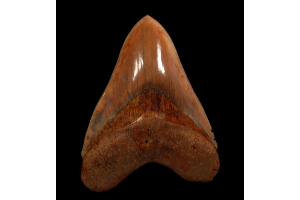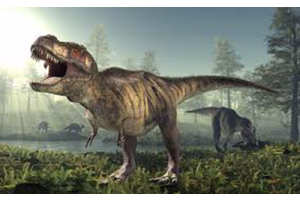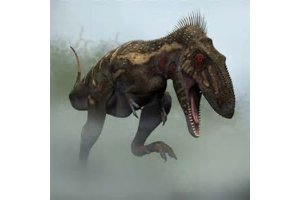Page 9 - Gary Greaser
- - August 05, 2025
Some things leave us in awe not because of their beauty, but because of the mystery they carry. Among the most fascinating relics of Earth’s ancient past is a stark reminder of one of the largest predators to have ever existed—the Megalodon. A single glance at an actual megalodon tooth can stir questions that stretch back millions of years. But how can we be sure what we’re holding is the real thing?
Let’s take a slow dive into the world of these ancient giants, uncover how to tell the real from the replica, and why it even matters to collectors and curious minds alike.
Fossil or Fake? Here's Where to Begin
Before we delve into identifying signs of authenticity, it's helpful to understand what you're dealing with. A Megalodon tooth is not simply a relic—it’s a preserved piece of a prehistoric predator. However, with demand rising and lookalikes flooding the market, it’s essential to approach with a careful eye.
Your journey starts with observation. Don’t be quick to judge—replicas are
- - August 05, 2025
If you’ve ever walked along the beaches of North Carolina and spotted a large, triangle-shaped tooth buried in the sand, you might have just discovered something truly ancient—a megalodon tooth. These massive fossilized teeth are more than just beach treasures. They are clues to the past. But why do so many of them wash up on North Carolina shores? Let’s dive in.
A Prehistoric Predator and Its Teeth
Millions of years ago, the oceans were ruled by a giant shark called Otodus megalodon. This predator could grow over 50 feet long. It had a mouth filled with huge, serrated teeth. One tooth could be over 7 inches long!
The megalodon didn’t just have big teeth—it had thousands of them. Like modern sharks, it constantly sheds old teeth while growing new ones. Over a lifetime, a megalodon may have lost tens of thousands of teeth. These teeth dropped to the ocean floor, where many got buried by sand and sediment.
Why the Coast of North Carolina?
Now let’s talk about why so many megalodon teeth
- - August 05, 2025
The Megalodon, often called the king of ancient seas, is one of the most fascinating sharks to ever live. This giant predator ruled the oceans for millions of years before going extinct. But what if it didn’t? What if the Megalodon still existed today? This question sparks the imagination of many shark lovers, collectors, and scientists. It’s thrilling to think about how our oceans and our world might look if this ancient giant still swam beneath the waves.
In this blog, we’ll take a deep dive into the possibilities, from the impact on the food chain to how we might interact with such a powerful creature. If you’re someone who loves collecting fossils, especially an authentic megalodon tooth, you’ll find this journey into “what if” both exciting and thought-provoking.
Understanding the Megalodon
Before we imagine today’s world with a living Megalodon, let’s take a quick look at what we know about it. The Megalodon lived around 23 to 3.6 million years ago. It was the largest shark ever
- - August 04, 2025
Few fossils command as much awe as a Megalodon tooth, monumental relics from a prehistoric oceanic titan. Yet, among the world’s Megalodon finds, those from Chile hold a unique distinction. Our remarkable preservation, rich coloration, and scientific significance place them in a league of their own.
Extracted from the Caldera phosphate mining area in Chile’s Atacama Desert near Copiapó, these teeth hail from the Bahia Inglesa Formation, dating back 4 to 6 million years. This site has become synonymous with some of the finest marine fossils from the late Miocene to early Pliocene.
This blog explores why Chile Megalodon teeth are widely regarded as some of the best-preserved marine fossils worldwide, and why they have become prized treasures for collectors and scientists alike.
The Atacama Desert: Nature’s Perfect Fossil Vault
The Atacama Desert’s extreme dryness is crucial to why fossils from this region are so pristine. Without moisture to accelerate decay or cause erosion, these fossils
- - August 04, 2025
Beneath the treacherous waters of ARK: Survival Evolved, a thrilling expedition awaits those daring enough to explore the deep sea. The digital world of ARK is more than just survival—it’s an immersive quest for rare treasures, and few items are as captivating or valuable as the Megalodon tooth. These prehistoric relics serve as powerful tools in your crafting arsenal, symbols of conquest, and crucial components for high-tier gameplay.
Learning the intricate factors that led to the discovery of megalodon teeth in ARK is not merely a matter of chance. It demands careful planning, a deep reservoir of knowledge, and unwavering perseverance. As we embark on this exhilarating underwater adventure together, we will delve into the mysteries and strategies that will empower you to unearth these elusive treasures hidden beneath the ocean’s depths during your thrilling deep-sea explorations. Prepare to unlock the secrets of the deep and navigate the vibrant ecosystems that hold the remnants
- - August 04, 2025
Few fossils inspire as much wonder and excitement as the massive teeth of the prehistoric Megalodon shark, an apex predator that ruled the ancient oceans millions of years ago. Among the many fossilized shark teeth discovered worldwide, the Megalodon teeth unearthed from Peru stand out for their exceptional beauty, rarity, and remarkable preservation. These fossils are not just scientific artifacts but breathtaking natural artworks, treasured by collectors, paleontologists, and enthusiasts alike.
Buried deep within Peru’s arid desert regions lie fossil beds that have preserved these majestic teeth for millions of years. What makes Peruvian Megalodon teeth so special is their vivid coloration, near-perfect condition, and the fascinating story they tell about prehistoric marine life.
This blog explores the unique geological settings that gave rise to these Peru Megalodon tooth, the distinct characteristics that make them so desirable, and why it holds a coveted place in the world of fossil
- - August 04, 2025
Few fossils evoke the awe and fascination of an authentic Megalodon tooth from Indonesia. These teeth are relics of a time when the ocean was dominated by the largest predator to have ever lived, the Megalodon shark. Unearthed primarily from the Miocene-aged fossil beds of West Java, these teeth are prized not only for their sheer size but for their remarkable preservation and distinctive coloration.
Among collectors and paleontologists alike, the quest to obtain and preserve a genuine Indonesian Megalodon tooth is a challenge compounded by the increasing number of replicas and restorations on the market.
This comprehensive guide will equip you with the knowledge to confidently identify and authenticate these biggest Megalodon tooth fossils ever found, ensuring your prized specimen is 100% genuine.
Why Indonesian Megalodon Teeth Are So Highly Valued
The fossil beds of West Java, Indonesia, are world-renowned for producing Megalodon teeth that are often considered the finest available.
- - August 04, 2025
Some fossils don’t just capture history, they command it. Among these, few can rival the mystique and magnificence of a Georgia Megalodon tooth. These fossilized teeth are not mere remnants; they are monumental trophies forged in ancient seas, bearing the marks of the largest predator that ever dominated Earth’s oceans. To hold one is to hold power, beauty, and a direct connection to a prehistoric era few can even imagine.
Georgia’s coastal rivers have gifted collectors with some of the most spectacular Megalodon teeth on the planet, teeth that combine astonishing size, rare coloration, and flawless preservation. For fossil enthusiasts, owning one is the ultimate achievement, a dream fueled by the perfect storm of rarity and natural artistry.
This blog explains what makes the Georgia Megalodon tooth the unrivaled crown jewel of fossil collections worldwide.
The Colossal Monarch of the Miocene and Pliocene Oceans
More than five million years ago, when the Earth was sculpting its modern
- - August 04, 2025
If there’s one fossil that instantly captures the imagination of shark enthusiasts worldwide, it’s the colossal tooth of the Megalodon, the largest shark to ever roam Earth’s oceans. Imagine holding in your hand a relic from a prehistoric predator so immense and powerful that it dwarfed even the great white sharks we know today.
The real Megalodon tooth is not just a fossil; it’s a gateway to a lost world where giants ruled the seas. For those passionate about sharks, collecting a Megalodon tooth is the ultimate trophy, a tangible piece of natural history that embodies the awe-inspiring might and mystery of these ancient marine titans.
The Megalodon: King of the Prehistoric Seas
The Megalodon (scientifically known as Otodus megalodon) was a behemoth among sharks, reaching an estimated length of up to 60 feet—roughly the size of a city bus. To put that in perspective, that’s about three times the length of a great white shark, the largest predatory shark alive today. This gargantuan size,
- - August 04, 2025
When it comes to prehistoric marine predators, few capture the imagination like the Megalodon. This colossal shark, which roamed ancient oceans between 4 and 20 million years ago, remains an awe-inspiring symbol of nature’s raw power. While its actual size continues to be debated, fossilized teeth provide one of the clearest glimpses into its immense scale. For fossil collectors and marine enthusiasts alike, Megalodon teeth represent not only a piece of natural history but also a tangible connection to an apex predator long vanished from our seas.
These enormous teeth are remarkable fossil finds—but what distinguishes them is their astonishing size when compared to the teeth of contemporary sharks. At lengths reaching up to three times those of the teeth from today’s great white shark, they prompt a fascinating inquiry: just how large is a megalodon tooth, and what elements influenced their gigantic size?
The Power Behind the Bite: Evolution’s Design for Dominance
Megalodon wasn’t just







